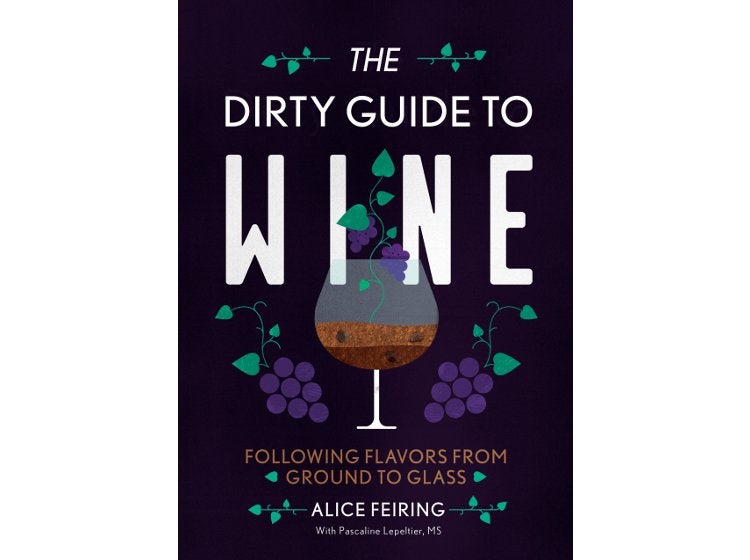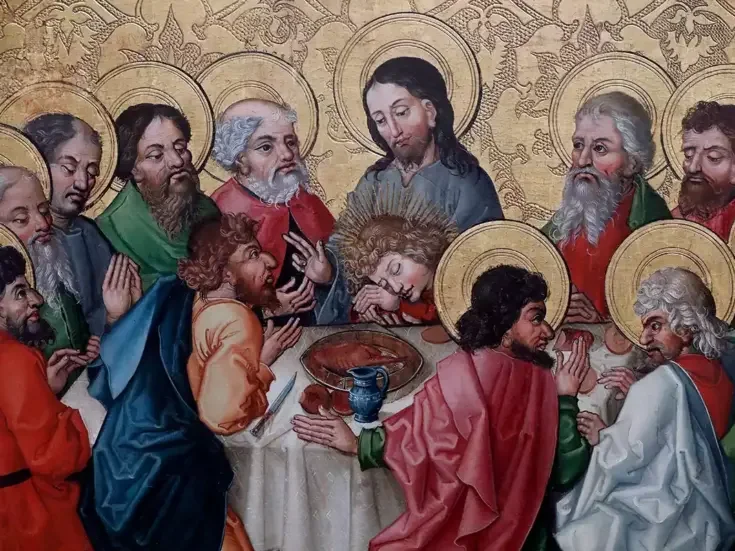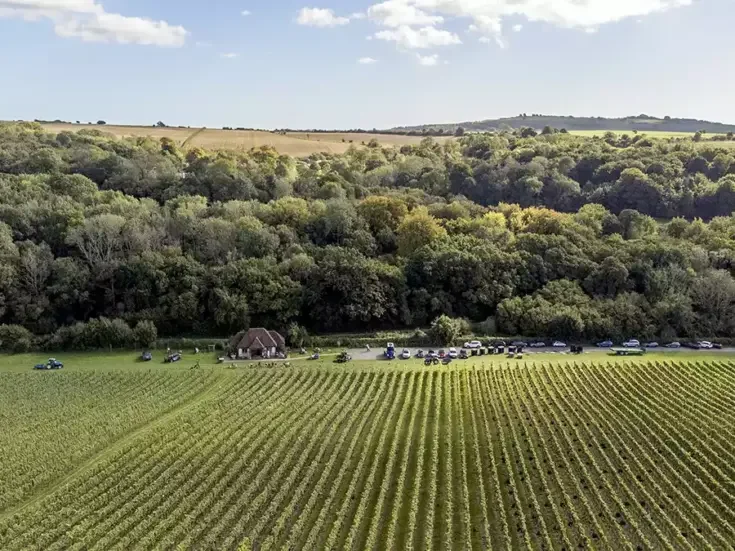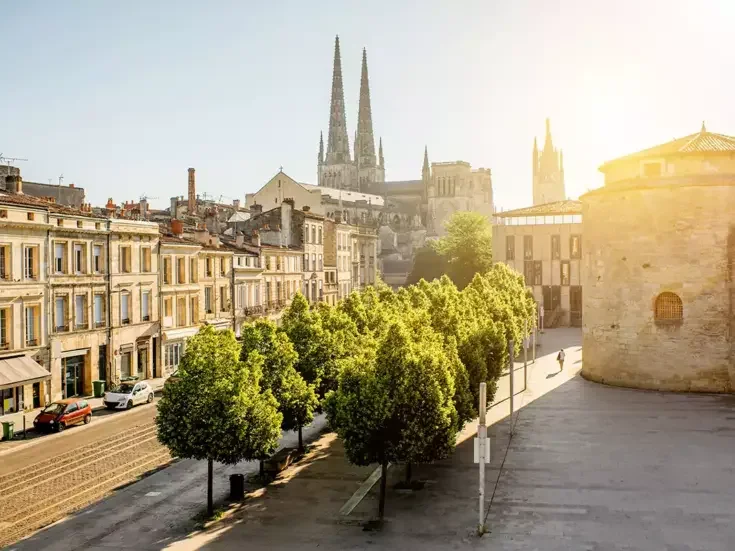
A world tour of wine dirt with ample invitations for discovery and discussion
Alice Feiring is familiar in anglo- and francophone wine circles for her self-described attempts to wrestle with the forces of industrialization, standardization, and manipulation, thereby helping to save the soul of wine. Her outlook borders on the Manichean but certainly reflects indefatigable enthusiasm and impressive determination in spreading the gospel of “natural” wine. The name of her long-standing newsletter, The Feiring Line, conjures the embattled and ferociously partisan aspects of its author’s labors, but its content is rich in charming, wry, and perceptive anecdotes; highly original tasting notes; and journeys into unjustly neglected places, all of which permeate her latest book, which traverses the world of wine under the aspect of bedrock and corresponding soil types.
Feiring wisely refrains from overselling the point of a wine guide so organized. Pascaline Lepeltier writes with admirable candor in the book’s foreword (“The Dirty Word”):
There’s no minerality in wine. One cannot taste the small oyster shells […] in Chablis or [taste] basalt in wines from Mount Etna. But […] that doesn’t mean that a sense of place doesn’t get delivered and that dirt and soil don’t have a part in it. Even if no one really yet understands “how” this can happen.
Lepeltier notes that she, Feiring, and the growers with whom they taste are “all humbl[y] aware of their lack of understanding of such mysteries, even as their experience grows.” Accordingly, readers will seek in vain—rightly so,given the present extent of scientific ignorance—for more-than-suggestive hints as to how specific structural or chemical properties of soil might explain and promote certain aromas, flavors, or textures in wine. And where such hypotheses are ventured, these are as likely (prudently) to be attributed to the growers themselves as promulgated by Feiring or Lepeltier. “[I]nstead,” suggests Lepeltier, “The Dirty Guide to Wine is an invitation […] to connect places and bottles, through the looking glass of the soils.” As Feiring points out, knowing that “[t]he type of soil has a profound effect on the resulting wine’s taste […] deepens the thinking person’s drinking enjoyment.”
And as she insists, her geological perspective serves as a salutary antidote to long-standing overemphasis on grape varieties as alleged keys to understanding how wine tastes and why.
Prior to embarking on her world tour of wine dirt, Feiring offers a very brief primer on soil, followed by a précis on viticulture and vinification that alleges organic and biodynamic methods as a virtual precondition for soils exercising their potentially profound influence. Especially in the four pages devoted to “winemaking,” a number of technical terms are used for which wine novices —the book’s primary target audience— will need to seek guidance in a reference source. A further introductory chapter offers in just six pages a light-hearted but enlightened account of “How to Taste Wine” accompanied by eight largely original criteria for judging quality, perfectly pitched to the beginner but also insightful for experienced enophiles.
For each type of underlying rock under consideration, Feiring highlights selected growing regions, profiles a grower from at least one of these, and offers lists by region of recommended growers. Disparity in surface area and global position might initially render Feiring’s approach disorienting; but then hers is manifestly not a book designed to let readers slide into any comfortable rut. She commences with coverage of igneous bedrocks, and among those with basalt, where she focuses on Mount Etna and the Canary Islands (really just Tenerife), then zooms out to discuss the entire Willamette Valley (insofar as basalt-based). The coverage of volcanic tuff that immediately follows concerns only two villages—Boca and Bramaterra —in Italy’s Alto Piemonte, and recommends just three producers, whose wines readers aren’t likely to encounter unless they reside in sophisticated retail markets or are willing and able to order wine from afar.
In her choice of growers to profile in detail, too, it can seem as though Feiring has gone out of her way to highlight the inaccessible. Two Côte d’Or growers are profiled: Jean-Yves Bizot to represent Côte de Nuits Pinot, and Bernard Van Berg on behalf of Côte de Beaune Chardonnay. Feiring suggests the neglect of the former in the wine press “might be due to his breathtaking prices,” while she describes the wines of the latter as “breathtakingly expensive.” To represent Barbaresco and Barolo (in the book’s understandably expansive section covering wines grown over limestone bedrock), Feiring chooses Lorenzo Accomasso, about whom she emphasizes his reclusiveness, his reluctance to open bottles even after what Feiring describes as a veritable pilgrimage to his disheveled residence, and the fact that he dropped his last US importer sometime around the turn of the millennium. Surely a reader will be at least mildly frustrated by such accounts.
But this far into the book, he or she may have figured out that the point of Feiring’s profiles is human interest and insight into how exceptional growers — often of a contrarian disposition—relate to their soils and vines. What’s more, a reminder is not without value that fine wines, regardless of price, can be rare and radical, as well as overlooked (sometimes with their producers’ connivance).
Just as Feiring is frequently very specific in the growing areas she profiles —while virtually dismissing important regions, notably the Médoc (opining that “only the wines pre-1986 are worth lusting for”)—she is equally selective in her choices of cépage. Allegedly “minor” grapes frequently receive welcome attention—a page is devoted to the virtues of Aligoté (on limestone, naturally) —but, for example, a mere nine words are allotted to Arneis: “a low-acid variety that has never really moved me.” So, just as one should not consult The Dirty Guide for a thorough survey of the world’s major wine-growing regions— nor is that its author’s intent—one should be prepared for an account of grapes and people unapologetically personal (not to mention partisan in its allegiance to biodynamic and organic viticulture).
With few exceptions, Feiring concentrates on matters about which she is passionate, and the sense of fervid advocacy and occasionally scathing critique found in these pages are a good part of what make them fun to turn.
Evocatively unorthodox
Both passion and accuracy slacken when Feiring touches on matters Teutonic, as might be anticipated already from the world map at her book’s outset, which under Germany lists solely schist. That’s doubly misleading. Viticultural Deutschland boasts as much geological diversity as neighboring Alsace, which Feiring treats as a “stand alone” due to its “mash-up of bedrocks.” And schist, properly speaking, is distinctive from its finer-grained cousin slate, the overwhelmingly dominant bedrock along the Mosel, which is the sole region Feiring actually discusses. (Admittedly, as she notes, the German Schiefer is ambiguous.) A self-professed devotee of basalt, Feiring nonetheless passed up an opportunity to profile the Pfalz, one of just two places in continental Europe (the other Hungary’s Somló) whose wines’ historic renown was expressly associated with that rock. Austria or even the Kamptal alone—the only Austrian region on which Feiring lingers— would equally justify the kaleidoscopic approach she accords solely to Alsace. (And under the rubric “gneiss,” she erroneously implicates the Kamptal’s most famous vineyard, Heiligenstein, a site actually distinguished by its dominance of Permian sandstone.) Feiring recommends regrettably few growers from Austria, especially given that the new millennium has witnessed widespread and inspiring conversions to organic and biodynamic viticulture.
A theme that crops up throughout The Dirty Guide is that of a region’s decline into industrialization, overproduction, and vinous debauchery, followed by contemporary, often heroic efforts to revive traditional grapes and methods. Such narratives will, I hope, inspire in readers who follow Feiring’s wine recommendations a belief that they’re thereby participating in a movement both aesthetically and morally elevated. Sometimes, though, Feiring oversimplifies and overdoes things, as in her picture of Piedmont as having gone entirely off the rails from the 1970s, with “modernists” pitted against a few hold-out “traditionalists.” Another recurrent Feiring theme, and one that’s harder to overemphasize, is the extent to which wine laws, especially in France, have become an impediment that quality-conscious wine growers increasingly circumvent by giving up on official appellations. In so doing, they unintentionally confound consumers’ attempts to tell from the label where a wine grew. The Dirty Guide is replete with welcome commendations of such refusenik growers that place them both geographically and geologically.
Another useful undercurrent of this book is Feiring’s emphasis on the floral and savory—both carnal and mineral— aspects of wines’ flavors, often in conjunction with reminders that wine would be rather boring if it were as overwhelmingly about fruits and berries (with oak accents), as a majority of ostensibly laudatory tasting notes suggests. Here too, though, Feiring occasionally gets carried away. A typical reader might manage to make sense of her claim on behalf of Northern Rhône Syrah that ideally “[t]he grapes are picked before they achieve sweetness, so all elements are in balance and not too focused on the fruit flavor.” Obviously, though, grapes that literally don’t even taste sweet are perforce insufficiently ripe for rendering decent wine.
Feiring has a knack for evocatively unorthodox turns of phrase (Pinot is “easy to drink without being stupid”), and her frequent colloquialisms generally strike the sort of invitingly informal tone that one imagines was her aim. The Dirty Guide is also refreshingly free of the vinous jargon and boilerplate that infect so much contemporary wine literature. Occasionally, though, Feiring’s prose turns muddled—as, for example, when she writes of Piedmont, “In the end, this soil births what might be the world’s best white truffles and a red wine, where Nebbiolo surely is king, but do not deny the supporting cast of characters, they are marvelous.” And there are too many sentences whose inscrutability courts factual confusion. Feiring and Lepeltier inform me that a revised reprint is imminent, and it should deal with grammatical infelicities or liberties liable to trip up readers. Further fact-checking would also be in order.
But the virtues of this “dirty” guide far outweigh its limitations. And although a high proportion of subscribers to The World of Fine Wine probably think they have outgrown the need for such a book, it can only be a wretchedly jaded or incurious enophile who fails to find in Feiring’s writings ample invitations for discovery and discussion. Moreover, novices to whom we self-proclaimed experts commend The Dirty Guide to Wine will come away sensitized not just to the intriguing, ill-understood influence of rocks on flavor, but to grapes, places, and styles they might otherwise have been led to overlook. They will also emerge inoculated against much prejudice and platitude that passes for received opinion in matters vinous and humbly aware that, in the last words of Feiring’s text, “the more we know, the more we don’t.”
Published by WW Norton–The Countryman Press $24.95 / £20







